Abstract
Stable lever-press responding in rats was reliably produced and maintained by a procedure in which responses could delay shocks without affecting overall shock frequency. Responding was not maintained when the delay-of-shock involved an increase in overall shock frequency.
Full text
PDF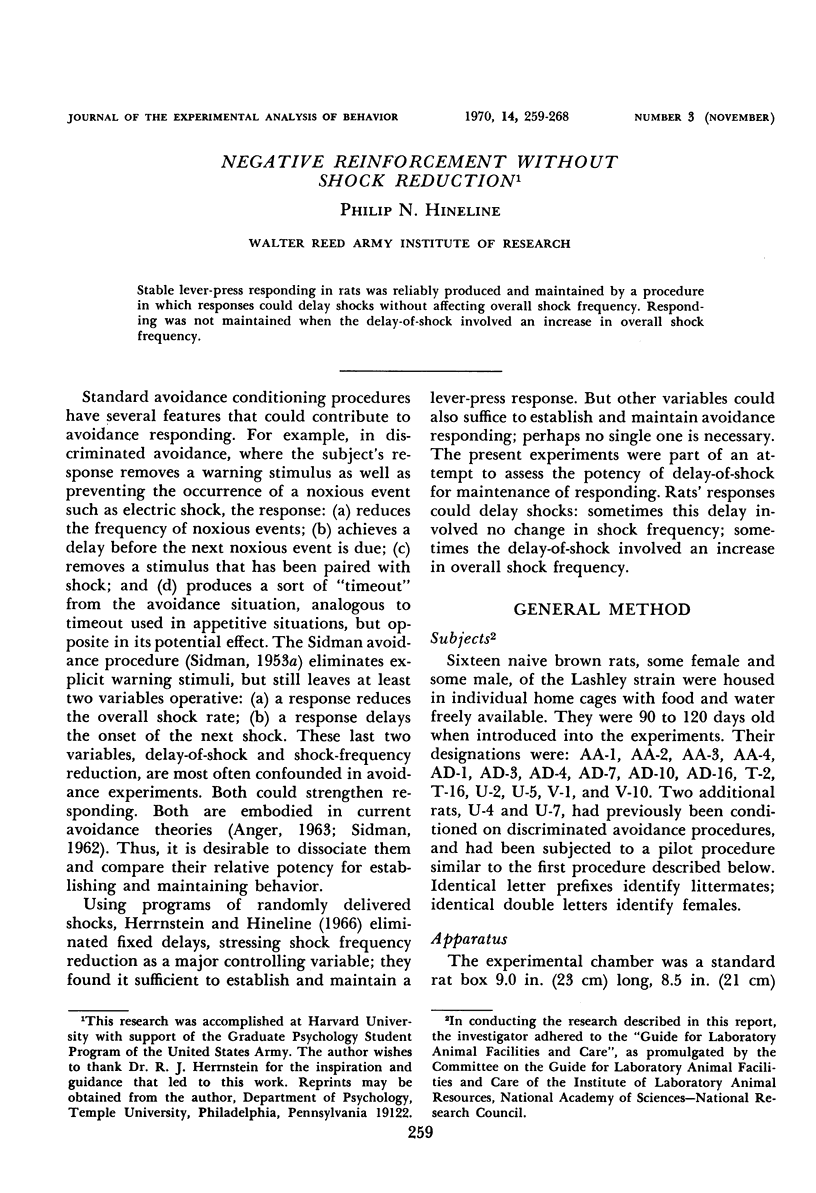

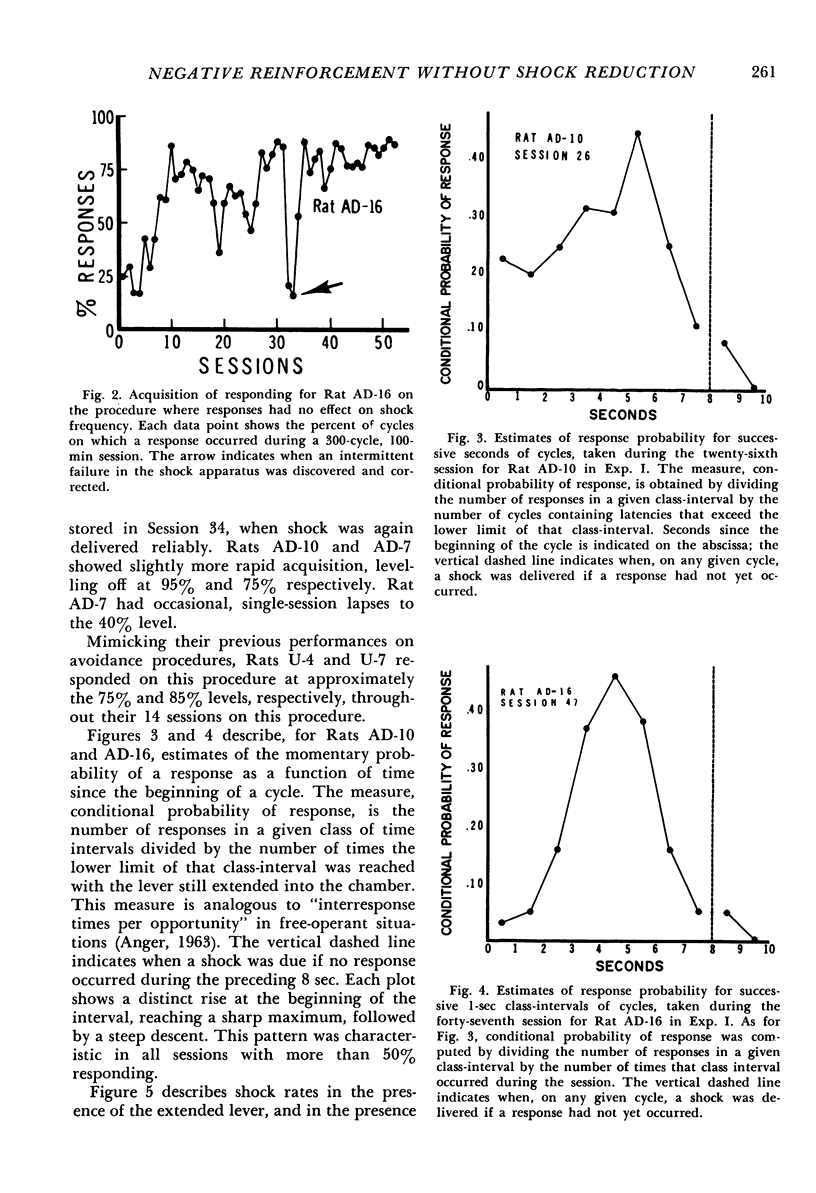
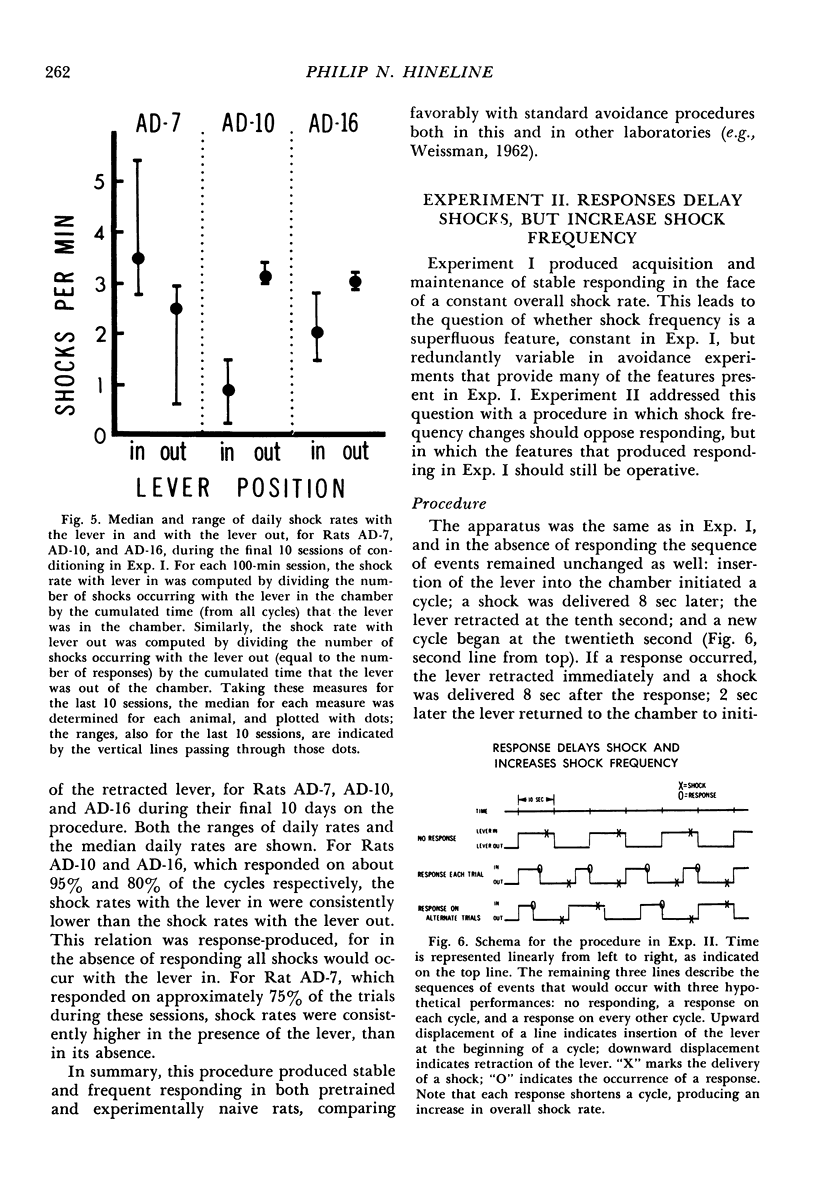

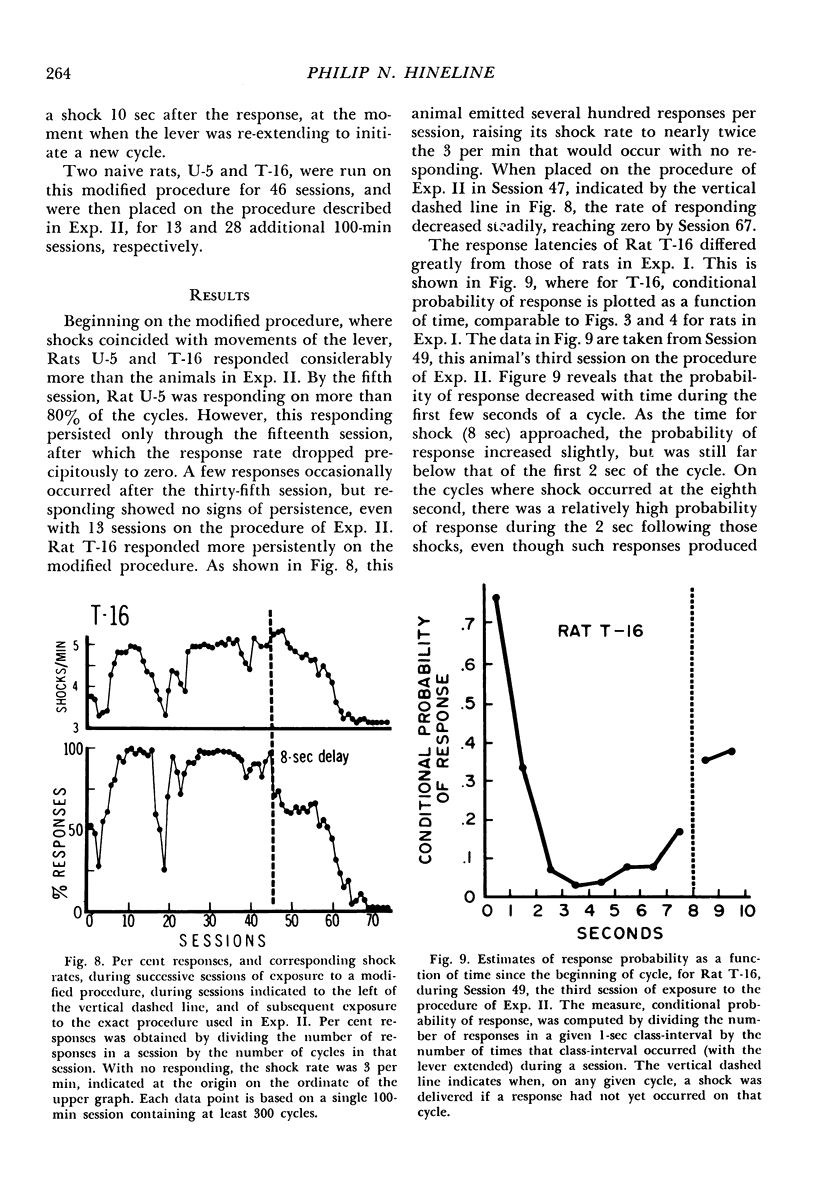

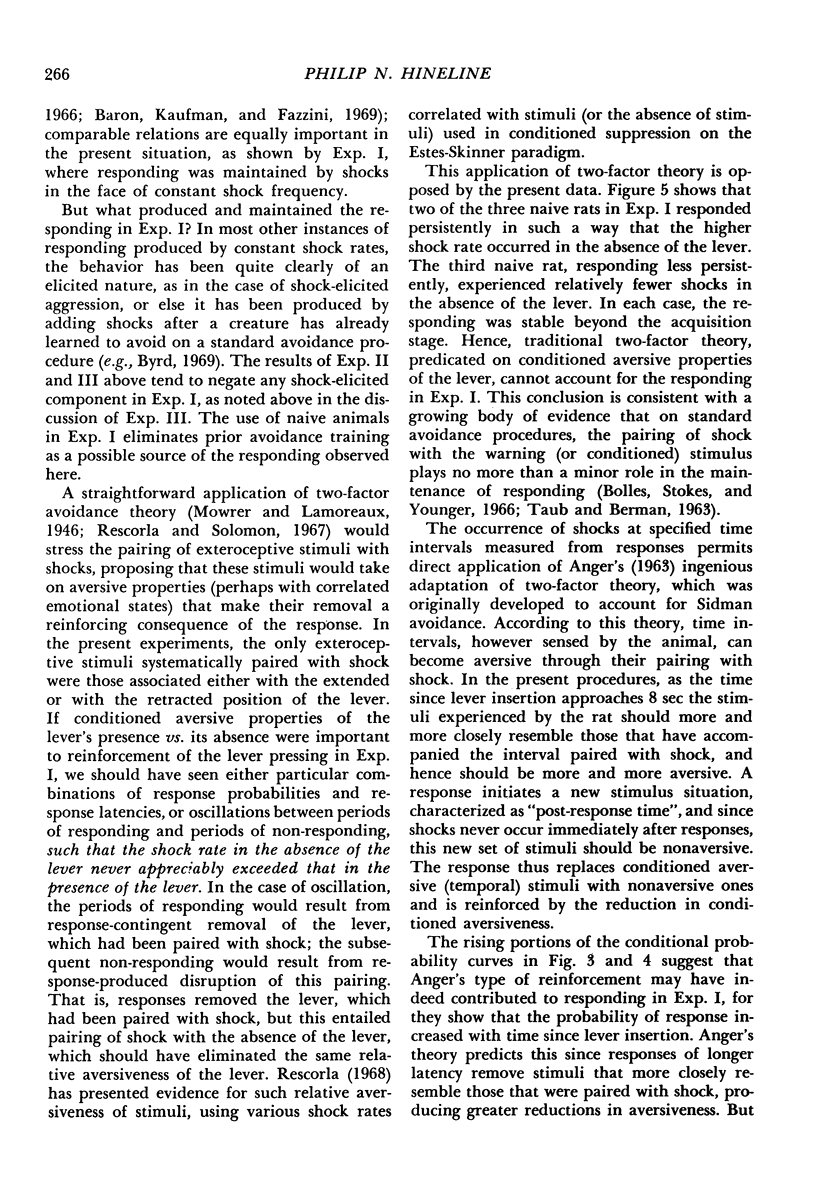
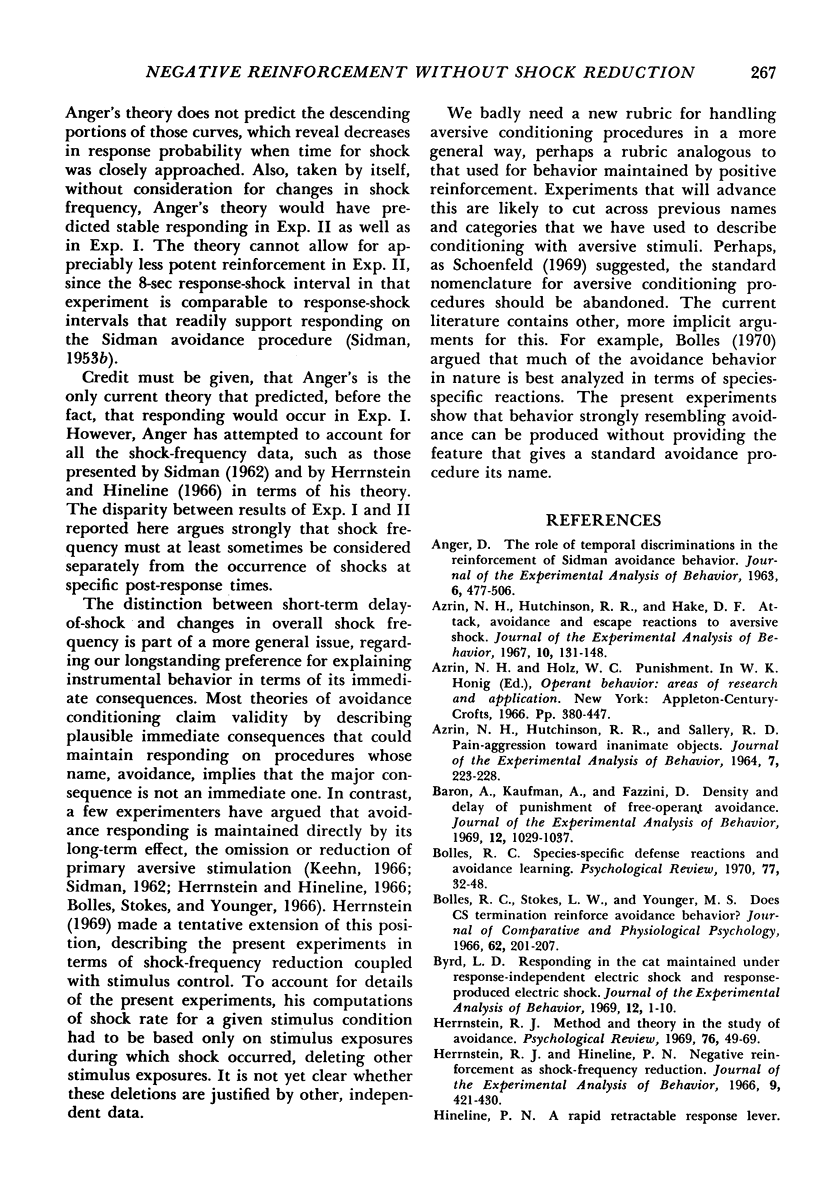

Selected References
These references are in PubMed. This may not be the complete list of references from this article.
- ANGER D. The role of temporal discriminations in the reinforcement of Sidman avoidance behavior. J Exp Anal Behav. 1963 Jul;6(3):477–506. doi: 10.1901/jeab.1963.6-s477. [DOI] [PMC free article] [PubMed] [Google Scholar]
- AZRIN N. H., HUTCHINSON R. R., SALLERY R. D. PAIN-AGGRESSION TOWARD INANIMATE OBJECTS. J Exp Anal Behav. 1964 May;7:223–228. doi: 10.1901/jeab.1964.7-223. [DOI] [PMC free article] [PubMed] [Google Scholar]
- Azrin N. H., Hutchinson R. R., Hake D. F. Attack, avoidance, and escape reactions to aversive shock. J Exp Anal Behav. 1967 Mar;10(2):131–148. doi: 10.1901/jeab.1967.10-131. [DOI] [PMC free article] [PubMed] [Google Scholar]
- Baron A., Kaufman A., Fazzini D. Density and delay of punishment of free-operant avoidance. J Exp Anal Behav. 1969 Nov;12(6):1029–1037. doi: 10.1901/jeab.1969.12-1029. [DOI] [PMC free article] [PubMed] [Google Scholar]
- Bolles R. C., Stokes L. W., Younger M. S. Does CS termination reinforce avoidance behavior? J Comp Physiol Psychol. 1966 Oct;62(2):201–207. doi: 10.1037/h0023678. [DOI] [PubMed] [Google Scholar]
- Byrd L. D. Responding in the cat maintained under response-independent electric shock and response-produced electric shock. J Exp Anal Behav. 1969 Jan;12(1):1–10. doi: 10.1901/jeab.1969.12-1. [DOI] [PMC free article] [PubMed] [Google Scholar]
- Herrnstein R. J., Hineline P. N. Negative reinforcement as shock-frequency reduction. J Exp Anal Behav. 1966 Jul;9(4):421–430. doi: 10.1901/jeab.1966.9-421. [DOI] [PMC free article] [PubMed] [Google Scholar]
- Herrnstein R. J. Method and theory in the study of avoidance. Psychol Rev. 1969 Jan;76(1):49–69. doi: 10.1037/h0026786. [DOI] [PubMed] [Google Scholar]
- Hineline P. N. A rapid retractable response lever. J Exp Anal Behav. 1968 Mar;11(2):127–128. doi: 10.1901/jeab.1968.11-127. [DOI] [PMC free article] [PubMed] [Google Scholar]
- Rescorla R. A. Probability of shock in the presence and absence of CS in fear conditioning. J Comp Physiol Psychol. 1968 Aug;66(1):1–5. doi: 10.1037/h0025984. [DOI] [PubMed] [Google Scholar]
- Rescorla R. A., Solomon R. L. Two-process learning theory: Relationships between Pavlovian conditioning and instrumental learning. Psychol Rev. 1967 May;74(3):151–182. doi: 10.1037/h0024475. [DOI] [PubMed] [Google Scholar]
- SIDMAN M. Avoidance conditioning with brief shock and no exteroceptive warning signal. Science. 1953 Aug 7;118(3058):157–158. doi: 10.1126/science.118.3058.157. [DOI] [PubMed] [Google Scholar]
- SIDMAN M. Reduction of shock frequency as reinforcement for avoidance behavior. J Exp Anal Behav. 1962 Apr;5:247–257. doi: 10.1901/jeab.1962.5-247. [DOI] [PMC free article] [PubMed] [Google Scholar]
- SIDMAN M. Two temporal parameters of the maintenance of avoidance behavior by the white rat. J Comp Physiol Psychol. 1953 Aug;46(4):253–261. doi: 10.1037/h0060730. [DOI] [PubMed] [Google Scholar]
- Schoenfeld W. N. "Avoidance" in behavior theory. J Exp Anal Behav. 1969 Jul;12(4):669–674. doi: 10.1901/jeab.1969.12-669. [DOI] [PMC free article] [PubMed] [Google Scholar]
- TAUB E., BERMAN A. J. AVOIDANCE CONDITIONING IN THE ABSENCE OF RELEVANT PROPRIOCEPTIVE AND EXTEROCEPTIVE FEEDBACK. J Comp Physiol Psychol. 1963 Dec;56:1012–1016. doi: 10.1037/h0048315. [DOI] [PubMed] [Google Scholar]


